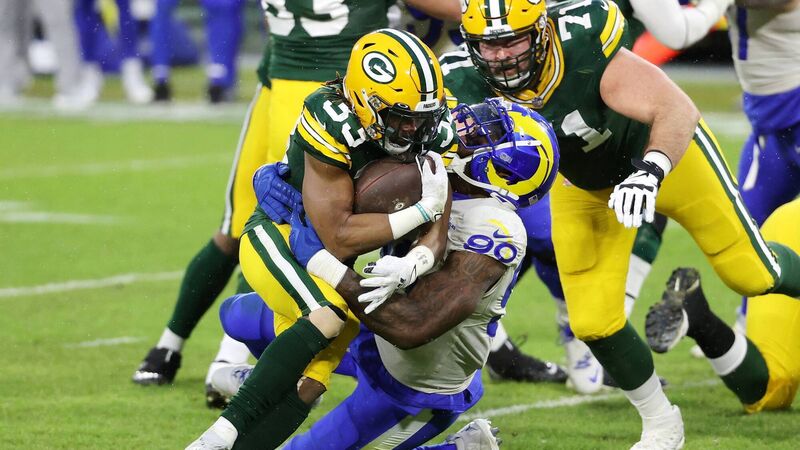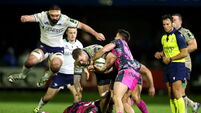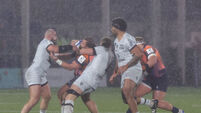Concussion: Lessons rugby can learn from the US as NFL tackles lawsuits

Green Bay’s Aaron Jones collides with Michael Brockers of the Los Angeles Rams during the NFC divisional playoff game at Lambeau Field on Saturday. In 2013, the NFL agreed a $1bn settlement with retired players who had suffered neurodegenerative disorders associated with chronic brain trauma.
The storm clouds on the horizon for rugby when it comes to concussion darkened significantly lately. The news of a lawsuit being pursued by former high-profile players such as Steve Thompson in Britain has implications for the game everywhere: if successful, will that lawsuit open the floodgates from Ireland to New Zealand?
Those rugby players and their legal advisers have no doubt tracked events in the United States closely. A long-running controversy about the brain damage sustained by American football players has had several significant milestones: concerns about the damage done by concussion and CTE (chronic traumatic encephalopathy) led to the NFL agreeing a $1 billion settlement in 2013 with retired players who had suffered neurodegenerative disorders associated with chronic brain trauma.












